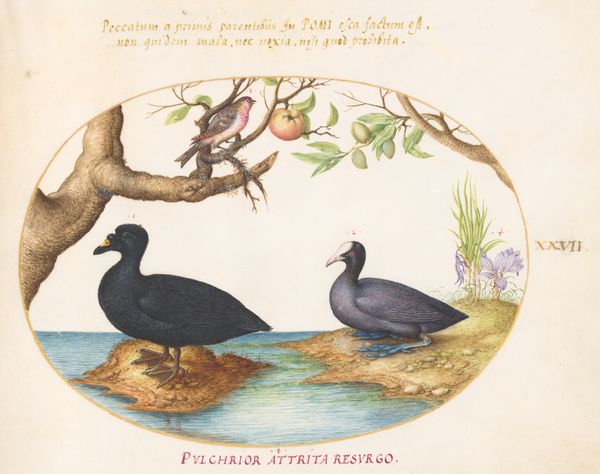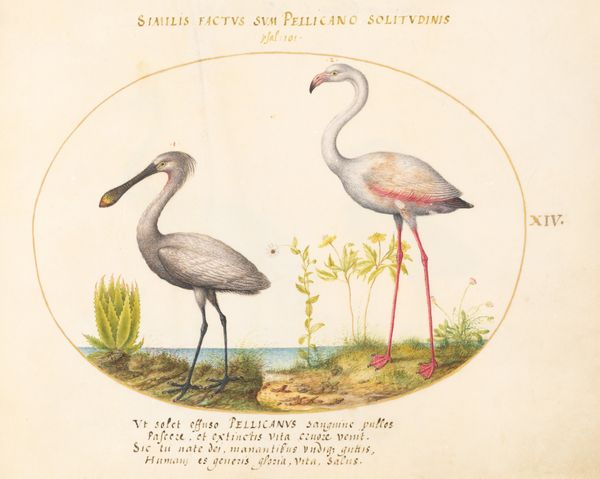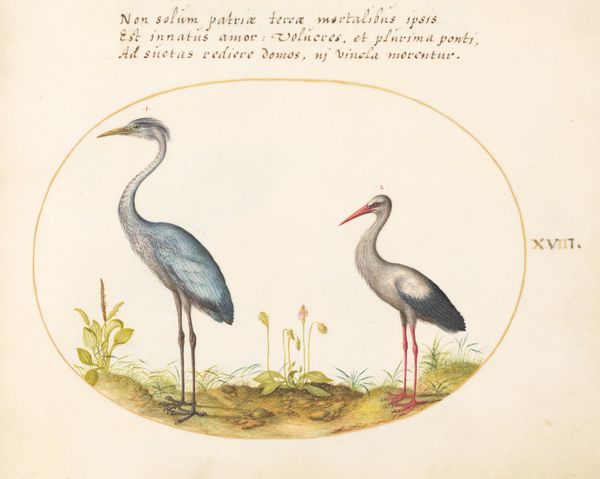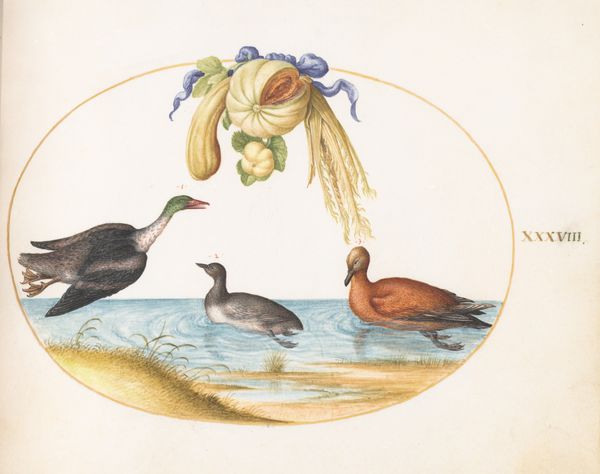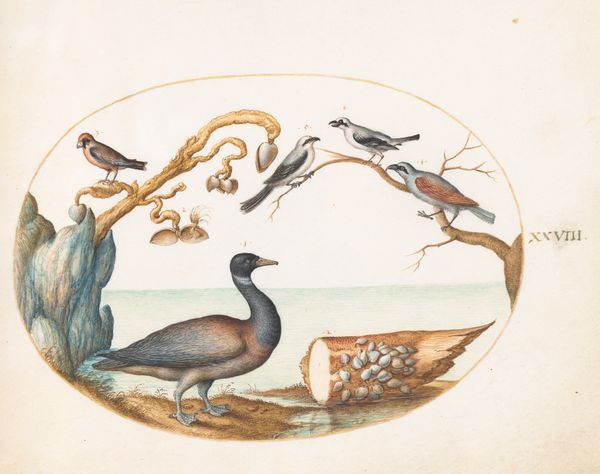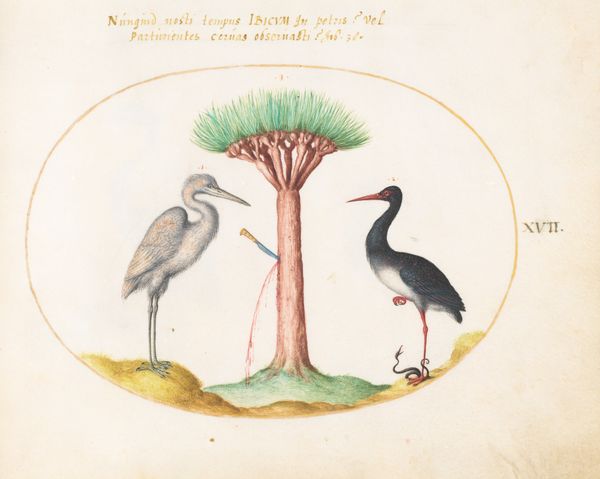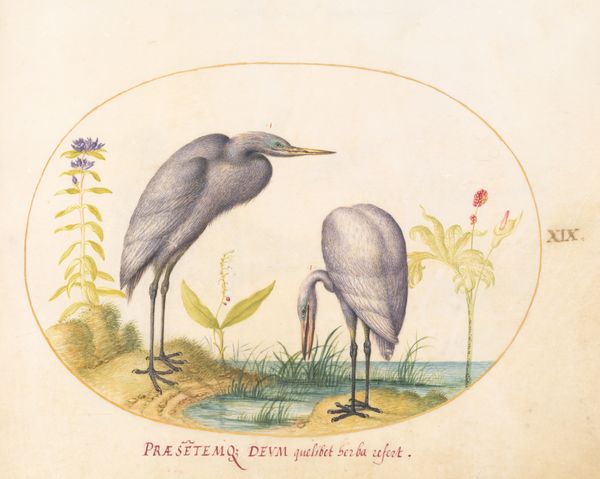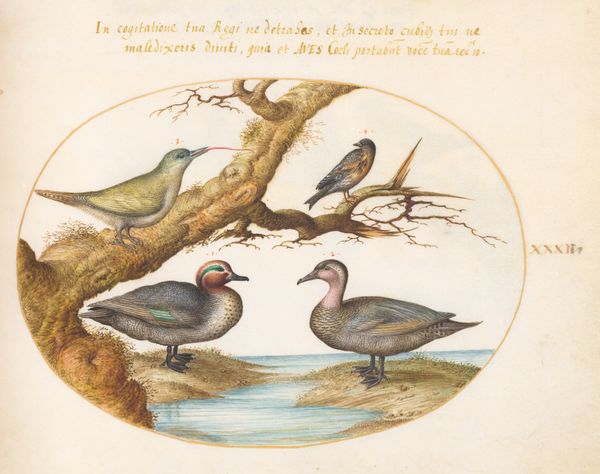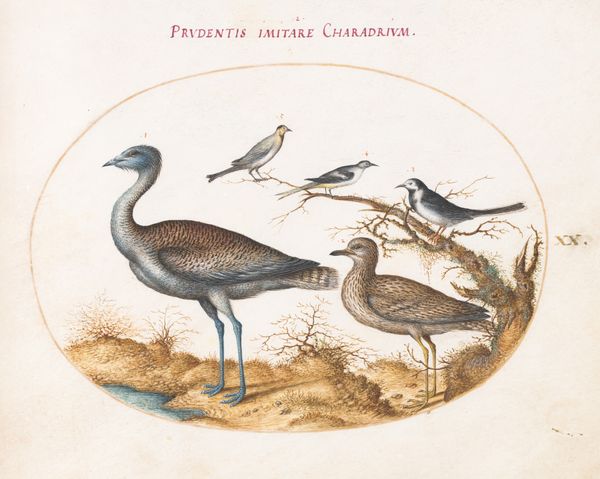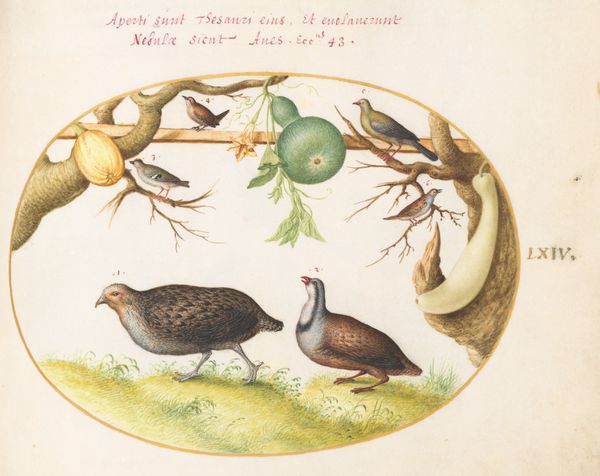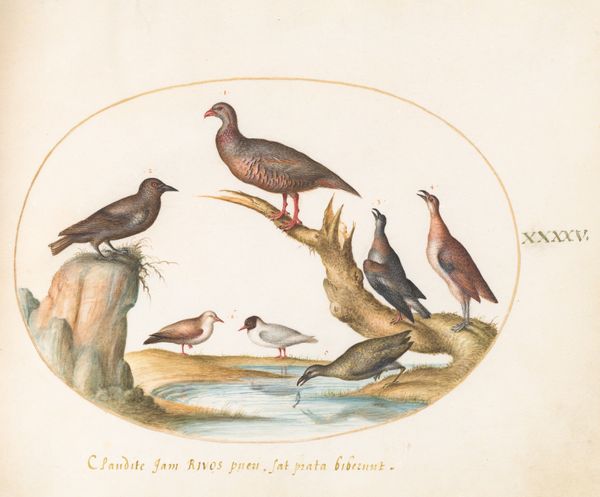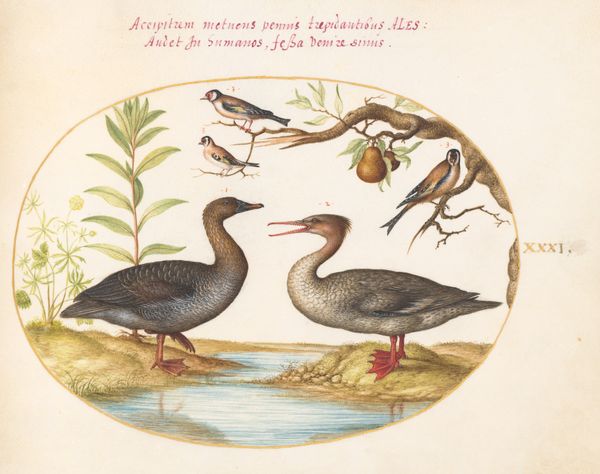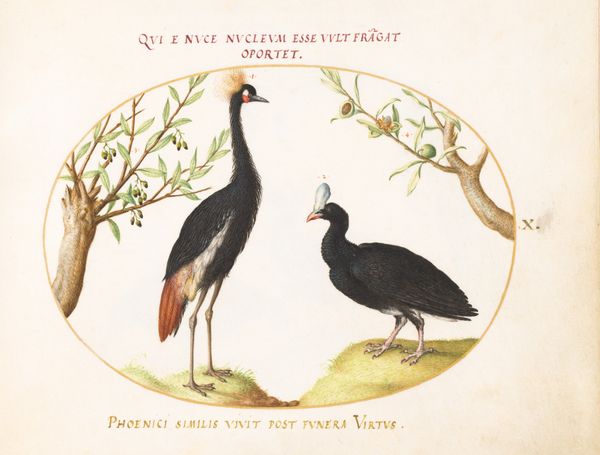
drawing, watercolor
#
drawing
#
water colours
#
mannerism
#
11_renaissance
#
watercolor
#
watercolour illustration
Dimensions: page size (approximate): 14.3 x 18.4 cm (5 5/8 x 7 1/4 in.)
Copyright: National Gallery of Art: CC0 1.0
Curator: Take a moment with this artwork by Joris Hoefnagel. Entitled "Plate 26: Cormorant and Coot," it was completed circa 1575-1580 and utilizes watercolor and drawing techniques. What are your first impressions? Editor: There's a striking stillness to it. The palette is muted, and the meticulous detail gives it a somewhat scientific, observational feel. A blend of naturalism with artifice, perhaps. Curator: Precisely. This piece reflects the Mannerist style, a bridge between Renaissance idealism and Baroque drama, with its heightened elegance and slightly exaggerated forms. Think about the symbolic value attached to birds during that time. They often represented freedom, the soul's journey, or even specific human characteristics depending on the species. Editor: It does feel like more than just a literal depiction. I am curious about why the tree behind the birds is presented leafless; it evokes a sense of the transient, the fragility of existence maybe? Is that a common trope of the time? Curator: Indeed. A barren tree often served as a memento mori, a reminder of mortality, the turning of seasons, but also resilience, that there would be growth and transformation after decline. Remember this drawing was probably meant for an educated audience; for example the the Latin phrase “Fvlica in palvdibvs” tells us these are birds found “in the marsh.” Editor: The positioning, the way they seem almost posed yet don’t quite meet the viewer’s eye…I'm struck by how the composition forces us to be almost a voyeur in this very specifically depicted tableau of nature. It also occurs to me how much printed materials played in understanding the world—art like this shaped scientific knowledge. Curator: Very good point. Watercolors afforded both a vibrancy and an exactitude prized for scientific illustration. By representing the Cormorant and the Coot with such care, it brings forward questions regarding how we classify, codify, and ultimately control nature. Editor: It’s interesting to consider this image within its historical context. The expansion of global trade meant exposure to more animal and plant species; I suppose these illustrations aided scientific discovery for European eyes. It certainly reveals both a growing interest in the natural world alongside the developing power structures that enable us to study it. Curator: The artist allows the cultural associations with these birds to become visually manifest. Understanding those symbols unlocks so many layers of meaning and societal thinking embedded in what might otherwise appear just an ornithological sketch. Editor: Thinking of it this way really highlights art's ability to capture the spirit of an age, even in its apparently simple representations. A world codified.
Comments
No comments
Be the first to comment and join the conversation on the ultimate creative platform.
